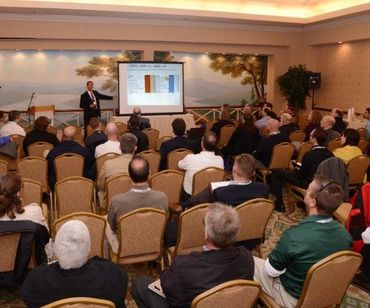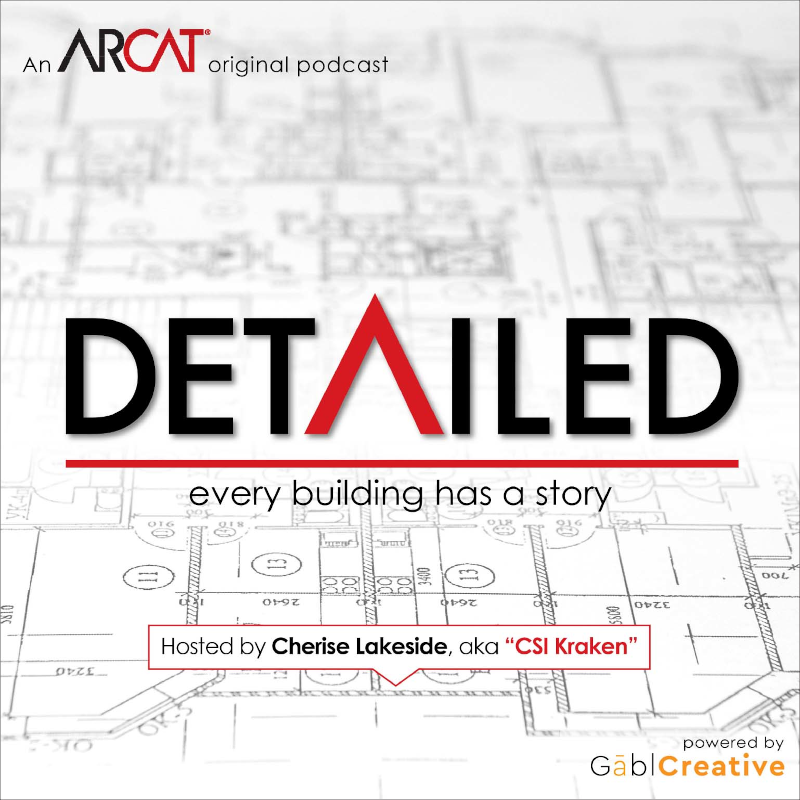|
Contributed by Elias Saltz Continuing education for architects is a necessary component of the profession. It is the main vehicle by which we are able to keep up to date with developments in material science, construction methods, business procedures, document creation, et cetera. All licensed architects are required to attend a certain number of Continuing Education Units (CEUs) to maintain their licenses and the AIA requires continuing education of its members to maintain membership.
All programs put on by my CSI chapter of Chicago offer CEUs and the chapter pays AIA every year to maintain its status as an education provider, and we offer far more units than architects are required to obtain. Typically, though, most architects will obtain a majority of their CEU hours by attending “lunch and learn” sessions arranged by an education coordinator at their firm, and at my company I fill that role. My firm is not a registered CEU provider, so our lunch and learn programs are provided by product reps whose programs have been registered and approved by AIA through its Continuing Education System (CES) to provide learning units. AIA-approved courses are also accepted by other organizations as well, such as GBCI and CSI, which require continuing education to maintain their advanced certifications. Over time, I’ve become more conscious of trying to be skeptical of claims being made as part of CES lunch and learn courses, and also evaluating whether I feel like I’ve gotten any value (other than lunch) for my time and attention. Most CES programs have some nuggets of useful information, and I don’t feel any qualms about accepting the credit for attending. On rare occasions a CES program is complete baloney; I refuse the credit (and maybe even leave the room - taking my lunch with me as compensation for my wasted time) and one time I even began wondering how the AIA decides what qualifies for an approved CES course in the first place. I started by reviewing the AIA CES Provider Manual Policies and Resources booklet and the Provider Manual Resources Toolkit. The bulk of the information in these documents is procedural and administrative: how to write high quality learning objectives, how to get your course approved and listed by AIA, how to register attendees, what introductory slides are required, and when you can and cannot discuss proprietary information. There is very little guidance about what the course content may or may not cover. Out of 34 pages in the “Policies and Resources” document, only one page - page 15 - talks about Health, Safety, Welfare (HSW) content (though to be fair, the “Resources Toolkit” talks more about HSW). Another few sentences provide the following minimal guidelines for content:
The existence of useless courses is a potential black eye for the AIA as the administrator of the CES system, and something they should really care about, in my opinion. However, there’s no evidence that the AIA intends to do anything about this in the near term. To compensate for this deficit, my firm has begun requiring that all CEU presenters agree to a set of rules that go above and beyond those required by the AIA as a condition for our agreeing to let them present. If rules like these were widely adopted, this could go toward fixing continuing education.
Architects should be able to rely on the continuing education they receive to actually improve their knowledge and abilities. Until we improve how we validate what we’re being taught, the CES and CEU programs it offers should be considered to be of questionable value.
2 Comments
Howard Jancy
8/26/2016 12:41:15 pm
Prior to scheduling a presentation, ask the presenter to provide contact information for some of the attendees from recent presentations, ideally a specifier or senior staff member.They can provide a first hand evaluation of the presentation's content and presenter's capabilities.
Reply
Lauren Anderson
8/27/2016 12:31:49 pm
I can understand the frustration an attendee must feel when they are attending a presentation where content feels unsubstantiated. As a rep who presents many times per month from various companies where I am providing AIA credit to attendees as a qualified presenter, requesting specific citations make sense if you can provide ample time for the rep to contact their company's presentation writer to do this documentation. I present on behalf of companies and do not write the presentations that have been submitted. I actually teach a program that you mention about color therapy and there is data to back this up. I get a little worked up when attendees leave 10 minutes into a presentation when many times, the firm has asked me to provide the presentation because - firmwide - they need credits. Firms have nearly stopped mincing words and just said "We aren't interested in your company but we need credit". Ouch. It's also painful when on a regular basis, they claim "x" number of attendees will show up and an average lunch costs $18 in DC and half of the attendees show. Sometimes, less than half show! Part of the value of paying the AIA to submit an educational program is, in part, so companies servicing architectural firms can have provider status to extend our exposure while educating architectural firms on systems and products that have potential value for projects they're designing. My husband works in another industry where continuing education is closely regulated by their industry licensing agencies and is not tied to vendors for the sole reason that a presentation will never be 100% unbiased and big or small, it's a big investment for many companies. Not all manufacturers or service firms have the budget for the requested CEU program fee and subseuquent costs associated with it, but they must "play the game" to ensure they are not viewed as being unable to provide said services. I have a firm in town that won't even allow reps to visit the firm until they've offered a lunch and learn first, I presume as a way for the firm to "vet" the credibility of that rep or company. When Cherise mentioned having a YP submit an article for this site for consideration, the first topic I thought of was overhauling the AIA CE program.
Reply
Leave a Reply. |
AboutLet's Fix Construction is an avenue to offer creative solutions, separate myths from facts and erase misconceptions about the architecture, engineering and construction (AEC) industry. Check out Cherise's latest podcast
Get blog post notifications hereArchives
March 2022
Categories
All
|


 RSS Feed
RSS Feed
